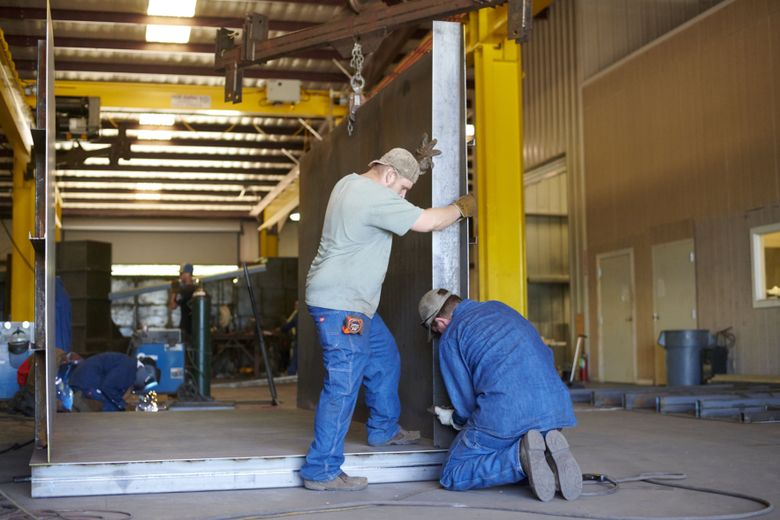Rich Americans activate New
Zealand pandemic escape
plans

20 April, 2020
As coronavirus infections tore across the U.S. in early March, a Silicon Valley executive called the survival shelter manufacturer Rising S Co. He wanted to know how to open the secret door to his multimillion-dollar bunker 11 feet underground in New Zealand.
The tech chief had never used the bunker and couldn’t remember how to unlock it, said Gary Lynch, general manager of Texas-based Rising S Co. “He wanted to verify the combination for the door and was asking questions about the power and the hot water heater and whether he needed to take extra water or air filters,” Lynch said. The businessman runs a company in the Bay Area but lives in New York, which was fast becoming the world’s coronavirus epicenter.
“He went out to New Zealand to escape everything that’s happening,” Lynch said, declining to identify the bunker owner because he keeps his client lists private. “And as far as I know, he’s still there.”
For years, New Zealand has featured prominently in the doomsday survival plans of wealthy Americans worried that, say, a killer germ might paralyze the world. Isolated at the edge of the earth, more than 1,000 miles off the southern coast of Australia, New Zealand is home to about 4.9 million people, about a fifth as many as the New York metro area.
The clean, green, island nation is known for its natural beauty, laid-back politicians and premier health facilities. In recent weeks, the country has been lauded for its response to the pandemic. It enforced a four-week lockdown early, and today has more recoveries than cases. Only 12 people have died from the disease. The U.S. death toll stands at more than 39,000, meaning that country’s death rate per capita is about 50 times higher.
The underground global shelter network Vivos already has installed a 300-person bunker in the South Island, just north of Christchurch, said Robert Vicino, the founder of the California-based company. He’s fielded two calls in the past week from prospective clients eager to build additional shelters on the island. In the U.S., two dozen families have moved into a 5,000-person Vivos shelter in South Dakota, he said, where they’re occupying a bunker on a former military base that’s about three-quarters the size of Manhattan. Vivos has also built an 80-person bunker in Indiana, and is developing a 1000-person shelter in Germany.
Rising S Co. has planted about 10 private bunkers in New Zealand over the past several years. The average cost is $3 million for a shelter weighing about 150 tons, but it can easily go as high as $8 million with additional features like luxury bathrooms, game rooms, shooting ranges, gyms, theaters and surgical beds.
Some Silicon Valley denizens have already made the move to New Zealand as the pandemic has escalated. On March 12, Mihai Dinulescu decided to pull the plug on the cryptocurrency startup he was launching to flee to the remote country. “My fear was it was now or never as I thought they might start closing borders,” said Dinulescu, 34. “I had this very gripping feeling that we needed to go.”
Dinulescu packed his bags and left his furniture, television, paintings and other belongings with friends. He bought the earliest plane ticket available and within 12 hours the Harvard University alum and his wife were on a 7 a.m. flight bound for Auckland. In San Francisco, “the entire international section of the airport was empty — except for one flight to New Zealand,” Dinulescu said. “In a time when pretty much all planes were running on a third occupancy, this thing was booked solid.”
Four days later, New Zealand closed its borders to foreign travelers, which could thwart some refugee travel plans. Dinulescu said he has connected with about 10 people in New Zealand who made the jump before the shutdown, but “a lot of venture capital people I know were not afraid enough in time for the border close,” Dinulescu said. “And now they can’t get in.” After the shutdown was announced, however, local press reported a slight increase in private plane landings in the country.
Dinulescu is now working for Ao Air, a small startup that’s designing an air filtration mask to rival the N95. Its co-founder, New Zealander Dan Bowden, said he’s fielded inquiries from about a dozen hopeful employees from the U.S. tech industry since the start of the pandemic, but that generally he’s wary of these requests.
“Some people are scared and reaching out just because they want a visa,” Bowden said. One potential U.S.-based investor even asked if he would be eligible for New Zealand residency if he boosted his investment in the startup. Notably, New Zealand does offer an investor visa for about $6 million for three years.
No comments:
Post a Comment
Note: only a member of this blog may post a comment.